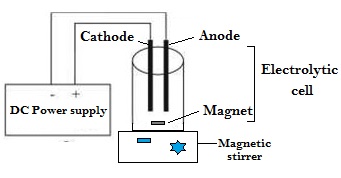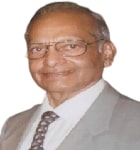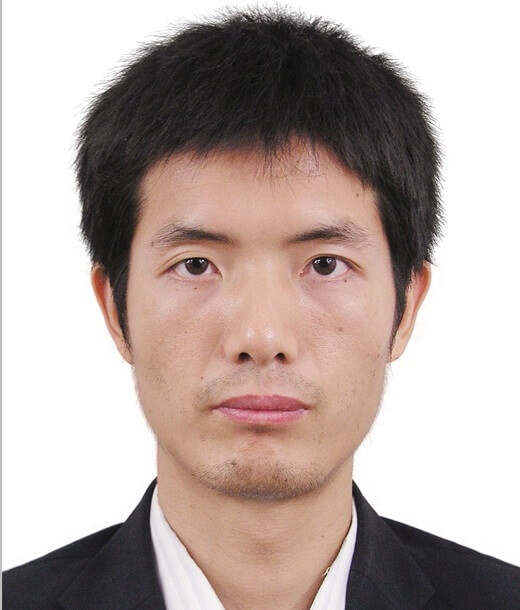Pulp and Papermill Effluent Treatment by Continuous Electrocoagulation

DOI:
https://doi.org/10.54060/jase.v3i1.27Keywords:
Papermill, Electrocoagulation, colour, Effluent treatment, Flow rateAbstract
The continuous electrocoagulation (CEC) technique, which uses aluminium (Al) as an electrode material, is examined in this work for the treatment of highly toxic pulp and papermill effluents. The process optimization was done with respect to the flow rates (L h−1) and residence time (τ) of wastewater which resulted in the excellent removal of Total solids (TS), colour and Chemical Oxygen Demand (COD). The removal rate of COD was 94.4 and 93.1% at the optimal flow rates of 0.5 and 1.0 dm3 h−1, correspondingly, whereas the colour removal rate was 91.6 and 83.6%. There was gradual decrease in the pH of the effluent during the process due to the production of aluminium hydroxides in variable oxidation states. Variation in the cell voltage during the electrolysis has also been studied. TDS of effluent was also decreased by a factor of 93% after 4 h residence time at a flow rate of 0.5 dm3 h−1. With a variation in flow rates, electrode degradation and consumption were also examined.
Downloads
References
P. Singh & I.S. Thakur, “Removal of colour and detoxification of pulp and paper mill effluent by microorganisms in two step bioreactors”, Journal of Scientific and Industrial Research (JSIR), vol. 63, pp. 944-948, 2004.
A. Gupta, “Pollution load of paper mill effluent and its impact on Biological Environment”, Journal of Ecotoxicology and Envi-ronmental Monitoring (JEEM), vol. 7, no.2, pp. 101-112, 1997.
S. K. Dutta, “Study of the physicochemical properties of effluent of the paper mill that affected the paddyplants”, Journal of Environmental Pollution (JEP), vol. 6, pp. 81-188, 1999.
R. Nagarathnamma and P. Bajpai, “Decolorization and Detoxification of Extraction-Stage Effluent from Chlorine Bleaching of Kraft Pulp by Rhizopus oryzae”, Applied and Environmental Microbiology (AEM), vol. 65, no. 3, pp.1078–1082, 1999.
A. Srivastava, P. Singh, S. Srivastava, et al., “Reclamation and characterization of value-added products from pulp and paper mill effluent using microbial fuel cell”, Materials Today: Press Proceedings, 2023.
D. Moussa, M. El-Naas, M. Nasser et al., “A comprehensive review of electrocoagulation for water treatment: Potentials and challenges”, Journal of Environmental Management (JEM), vol.186, pp.24-41, 2016.
G. Chen and H. Yung, “Electrochemical Wastewater Treatment Processes”, Handbook of Environmental Engineering Advanced Physicochemical Treatment Technologies, The Humana Press Inc, Totowa, New Jersey, vol.5, pp. 57–107, 2007.
C. Moreno, D. Cocke, J. P.Morkovsky, et al.,“Electrochemistry behind Electrocoagulation using Iron Electrodes”, The Electro-chemical Society, pp. 1–15, 2007.
F. Eddaqaq, B. Lekhlif, K. Digua, et al., “Suspended Solids and Organic Matter Elimination from Superficial Raw Waters by Elec-trocoagulation Process in an Airlift Reactor Interna Loop”,International Journal Applied Chemistry (JAC), vol.3, no.5, pp. 1-6, 2016.
M. Alimohammadi, M. Askari, M. Dehghani, et al., “Elimination of natural organic matter by electrocoagulation using bipolar and monopolar arrangements of iron and aluminium electrodes”, International Journal of Environmental Science and Tech-nology (IJEST), vol.14, pp.2125–2134, 2017.
X. Chen, G. Chen and P. Lock, “Investigation on the electrolysis voltage of electrocoagulation”, Chemical Engineering Science (ACE), vol. 57, no.13, pp. 2449–2455, 2002.
A Srivastava, K Srivastava, P Singh et al., “Application of Continuous Electrocoagulation Process for Distillery Wastewater Treatment”, Journal of Scientific and Industrial Research (JSIR), vol. 80, pp. 486-490, 2021.
P. Singh, A. Srivastava and N. Srivastava, “Electricity generation by microbial fuel cell using pulp and paper mill wastewater, vermicompost and Escherichia coli”, Indian Journal of Biotechnology (IJBT), vol.16, pp.211–215, 2017.

Downloads
Published
How to Cite
CITATION COUNT
Issue
Section
License
Copyright (c) 2023 Ashima Srivastava, Shyni Singh, Pratibha Singh, Shaili Srivastava

This work is licensed under a Creative Commons Attribution 4.0 International License.



























